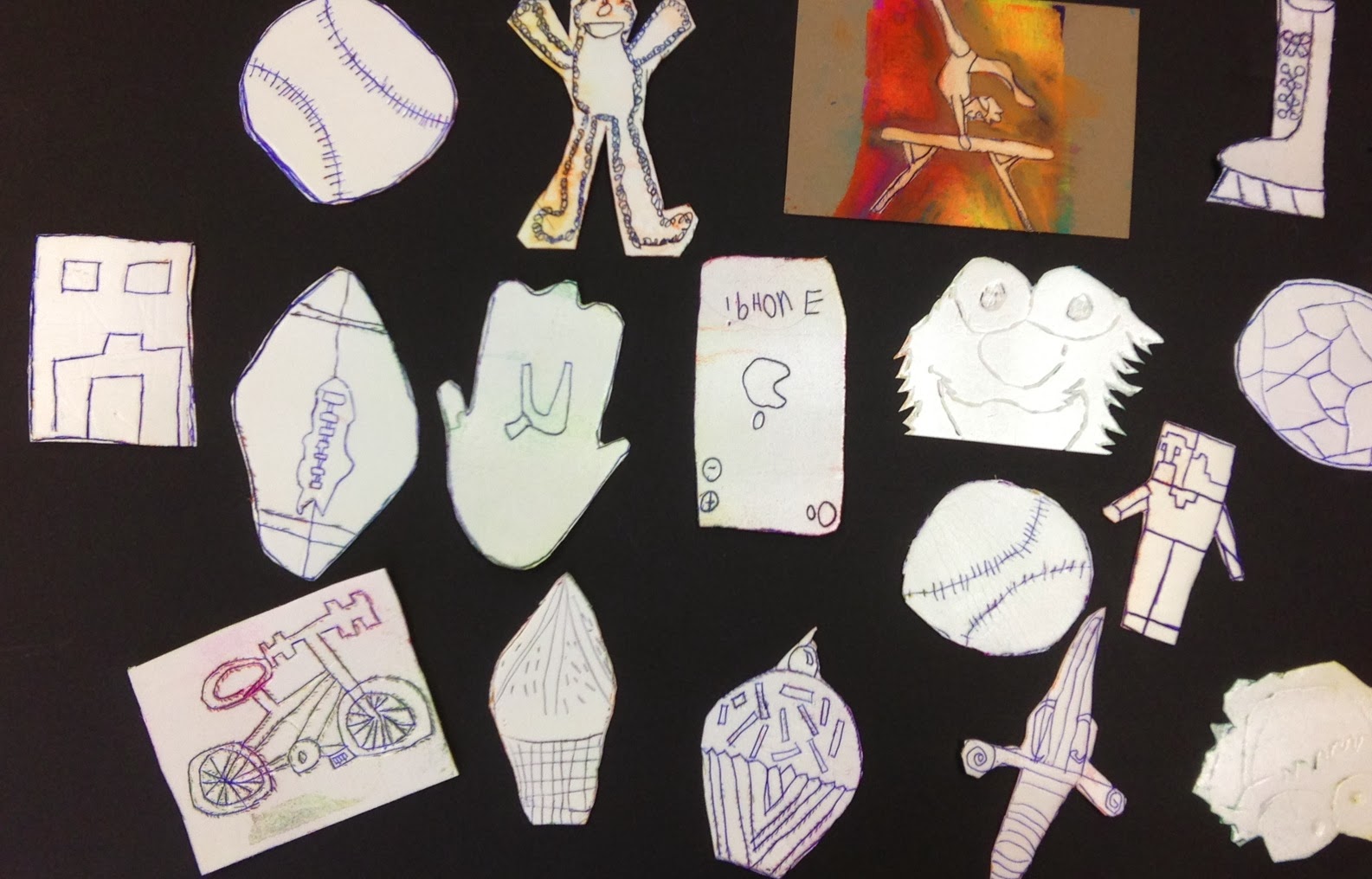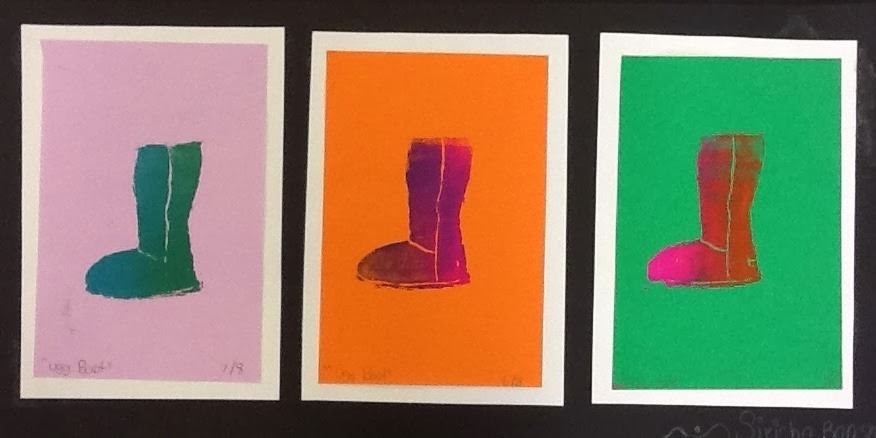Kindergartners created people stick puppets inspired by the works of the work of Paul Klee after to conclude their unit on collage. After several weeks learning about how to arrange, cut and distinguish between different textured paper they used simple geometric cardboard shapes to create person puppet. Each artist choose a specific pose for their puppet which included splits, dance moves, and even one performing a hands stand!
Friday, December 13, 2013
Pop Art Printmaking with Fourth Grade
Fourth grade began this unit with a discussion on what pop culture is today and how it was different during the time of Andy Warhol. We examined some of his work as well as other Pop Art artists such as Roy Lichtenstein, Robert Rouschenberg, and Jasper Johns. Next, we chose our favorite pop art item and created a relief plate by carving into Styrofoam and printing with a blend of two colors. Lastly, we learned how artists mount their work for an exhibition and checked to make sure our prints were correctly labeled with our titles being consistent on each print and having our impression and edition numbers included as well.
Campbell’s
Soup Cans,
1963 Andy Warhol
Marilyn Monroe, 1962 Andy Warhol
Pop Culture Brainstorming
Some of our foam printing plates
Monday, December 2, 2013
Wired
First grade began their unit on sculpture by looking at some of Alexander Calder's wire sculptures and noticing how sculptures are 3D which means NOT FLAT. We started off with a wire exploration with the inspiration of three pipe cleaners stapled to a small black format. Our young artists focused on all the different ways they could manipulate the wire to make different types of lines. We discovered how to make wavy, curvy, zig zag, spiral, and curvy lines out of our wire by bending, shaping, connecting, and twisting as we worked. Next, we examined the wire creations from Japanese artist Masao Seki and could not wait to use what we learned about wire to create our own crowns. We finished them off with beads and could not take them off our heads!
Wire Exploration
Wire Elephant, 1928, Alexander Calder
Goldfish Bowl, 1949 Alexander Calder
Masao Seki working on his crowns
Masao Seki
Masao Seki
Pre K Texture Collage in WHITE, GREEN, and ORANGE!
Pre-K started their unit on collage with these all in white
pieces. Students were shown a few
examples of how contemporary artists
work all in white to show the subtleties of different textures such as Marcel Broodthaers,
Robert Ryman and Piero Manzoni. We learned how TEXTURE IS HOW SOMETHING
FEELS and some of the different materials we were able to use were bumpy,
smooth, rough, foamy, and fluffy items to make our collages. Since this was Pre-k’s first stab at gluing
and arranging shapes to make a collage, we focused heavily on properly wiping and dotting our glue as well as where to
place our shape on our formats Some
artists even learned the term OVERLAPPING, which is when we put a shape on top
of another shape. After starting with white we have moved on to orange and green and will soon begin using scissors.
Achrome, 1962 Piero Manzoni
White Cabinet and White Table, 1965 Marcel Broodthaers
MATERIALS
DISPLAY
STUDENT WORK
GREEN TEXTURE STUDY
ORANGE TEXTURE STUDY
Subscribe to:
Posts (Atom)





















































